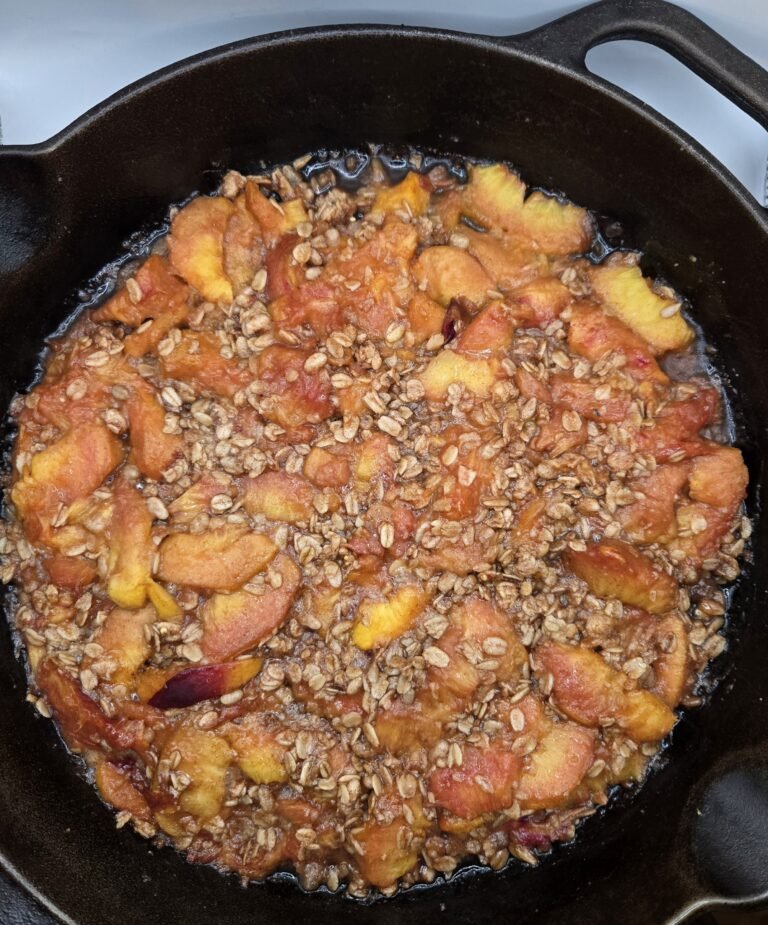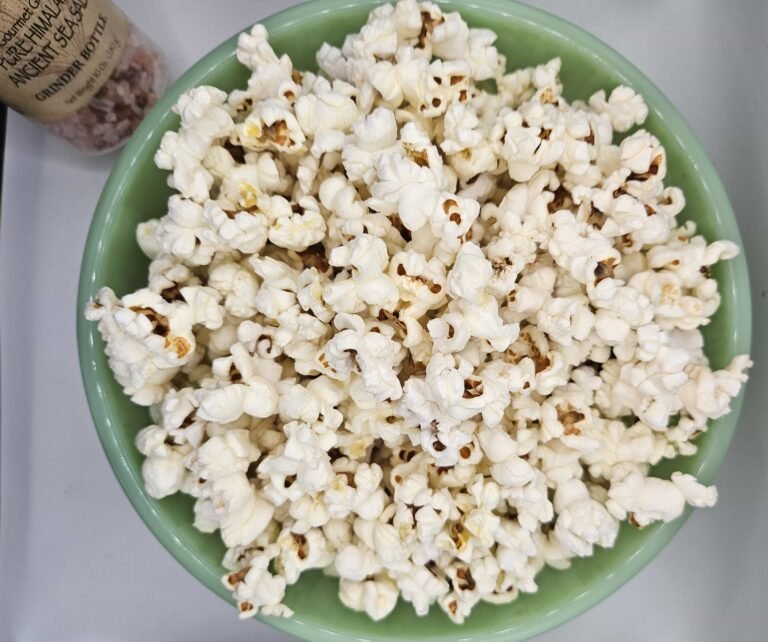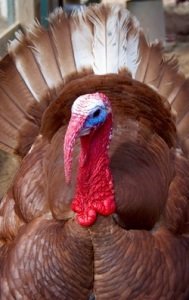
One good thing about factory turkeys is the rock bottom price – they were $1.19/lb at Safeway and I’m sure you can get them cheaper. That’s because as many as 10,000 turkeys can be packed into one factory farm building. They’re engineered to grow many times larger and faster in confinement than normal turkeys and suffer from heart disease, respiratory damage, and many other health issues. Since they are packed so tightly that they can hurt each other with their beaks and claws, they are routinely mutilated in a painful process to remove their beaks using a hot blade, shears, or a high-voltage electric current; they also may have a portion of their toes removed with surgical shears[1]. There was a picture on Facebook pointing out how a turkey’s body has changed since the 1930s, and I was surprised that most of the comments from people were that they do vegetarian Thanksgiving dinners.
Here are pictures that show the difference between factory turkeys and pasture turkeys. You can click on pictures to enlarge them.
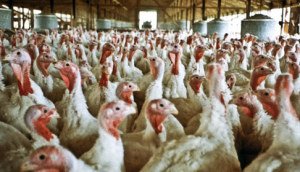
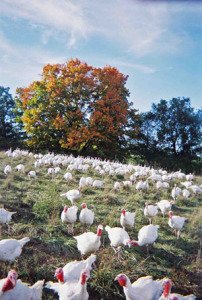
For the past few years, I have ordered a turkey from a local farm. The turkeys grow up playing outside dodging for bugs, chasing grasshoppers, scratching, pecking grasses, and having a grand old time acting like real turkeys. Turkeys are extremely exploratory and social animals and learn by watching other birds. They have portable, floorless shelters, which get moved to fresh grass. They go into the shelters when they are not being supervised so larger, wild animals like fox and coyotes do not get them. Many farms have a dog trained to protect the turkeys. Half of their food comes from the pasture (grasses, clover, and bugs), and they are fed other grains that are either purchased (usually locally) or grown on the farm. They also eat grit (like tiny rocks!) so their gizzards can digest the more fibrous parts of their diet.
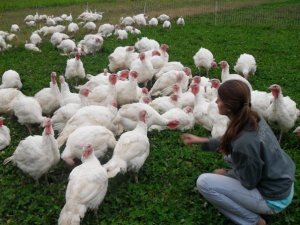
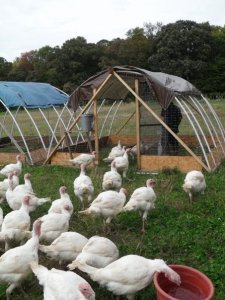
Turkeys eat a larger percentage of their diet in grass than chickens, and they have a significantly higher level of cancer-fighting CLA (conjugated linoleic acid). The farmer does not control the size of pasture raised turkeys for processing on a specific date.[2] There are many variables outside the farmer’s control when raising turkeys on pasture — heat, cold, rain, drought, etc., effect their size. They range in weights from about 12-24 pounds, usually on the smaller side, so people who order real turkeys cannot be too picky about the exact size. The prices range from $3-4.00 per pound. Our turkey last year was over 20 pounds.
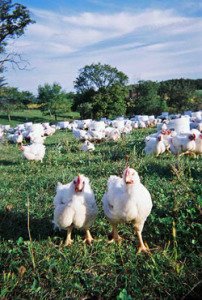
Pasture turkeys cook a lot faster than factory turkeys, because they are much leaner. They are not breast-heavy so they’re better proportioned and cook more evenly. Overcooked turkeys dry out and lose flavor. You cook real turkeys from room temperature about 15 minutes per pound. Usually the farmer give you a guide sheet on how to cook it. You won’t believe how good they are when you get a real turkey and cook it faster at higher heat. Even though my dad was pacing back and forth through the house grumbling that the turkey wasn’t in the oven yet, everyone raved later that it was the best turkey we’ve ever eaten. This year I’m passing on making dinner for the in-laws and we’re going to eat my mom’s factory turkey – when in Rome…. But I am taking two pounds of Brussels sprouts.
[1] “Turkey Production on Factory Farms,” Farm Sanctuary, http://www.farmsanctuary.org/learn/factory-farming/turkeys-used-for-meat/
[2] Some info and pics taken from local Maryland farms: Green Branch Farm in Salisbury, Jehovah-Jireh Farm in Dickerson, Open Book Farm in Myersville, and Pluma Feliz Farm in Westminster; and Green Duchess Farm in NJ.

